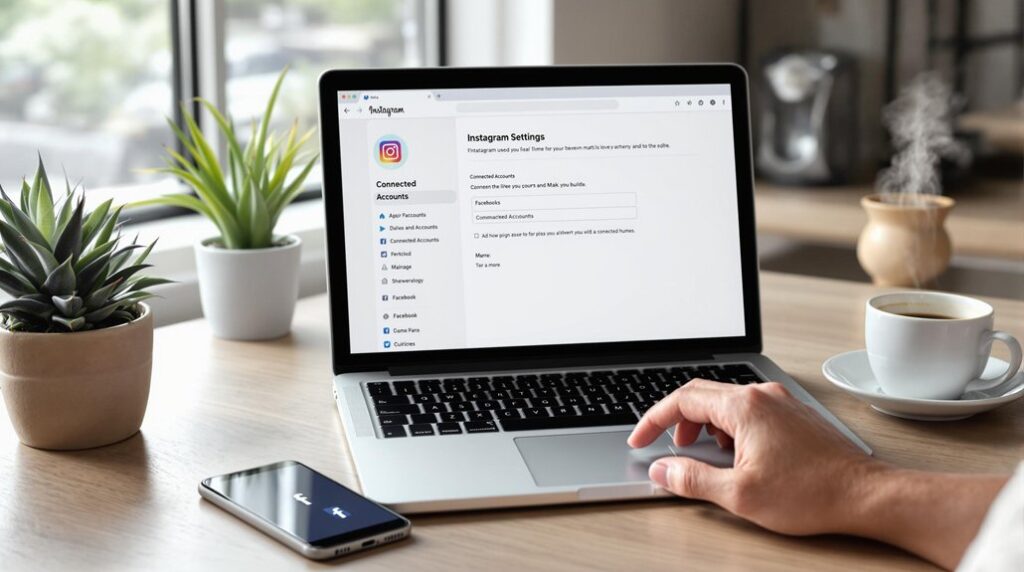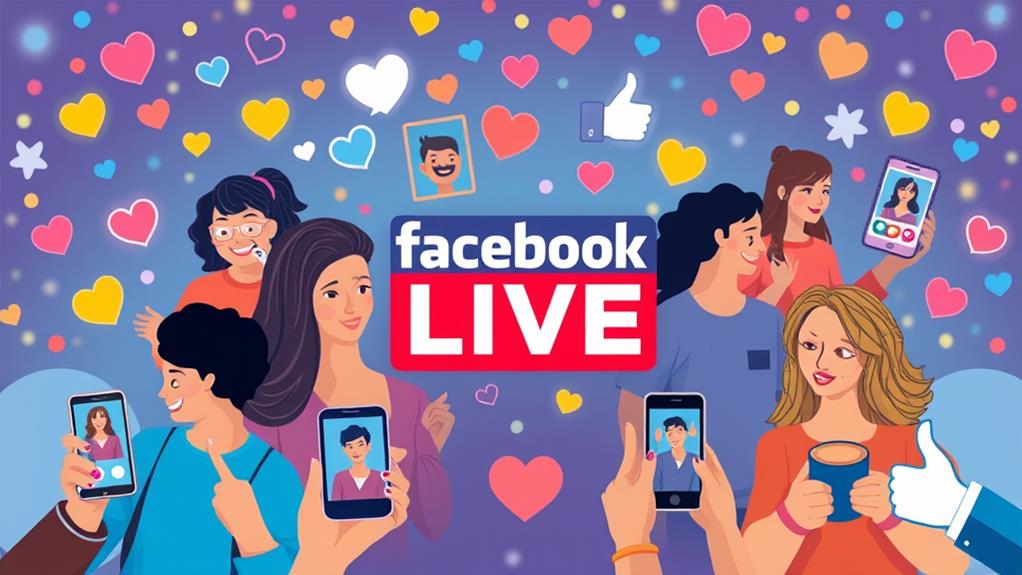To harness Facebook for business success, focus on engagement metrics like likes, comments, shares, and clicks. Track engagement rates by dividing total engagement by reach; a high rate boosts visibility and brand loyalty. Monitor reach and impressions to gauge content exposure and optimize posting times. Keep an eye on page likes, followers, and referral traffic to gauge and drive growth. Analyze follower demographics for tailored content and effective targeting. Evaluate ad metrics like CPM and CPA to refine spending and improve ROI. Master these metrics, and you'll discover deeper insights for maximizing your strategy's impact.
Key Takeaways
- Monitor engagement metrics like likes, comments, and shares to refine content strategy.
- Track engagement rate by dividing total engagement by total reach for increased brand visibility.
- Analyze reach and impressions to optimize content visibility and exposure.
- Utilize follower demographics such as age, gender, and location for targeted content and ad strategies.
- Measure advertising efficiency through metrics like Cost per Thousand Impressions (CPM) and Cost per Acquisition (CPA).
Engagement
Regularly monitoring engagement metrics on Facebook can provide crucial insights into how well your content resonates with your audience. By analyzing interactions such as likes, comments, shares, and clicks, you gain a deep understanding of audience interaction with your posts.
Identifying engagement trends allows you to see which content types are driving the most interaction, helping you to refine your engagement strategies effectively.
For instance, if you notice that video content consistently receives higher engagement than text posts, it's clear that your audience prefers visual media. This insight enables you to adjust your content strategy to include more videos, thereby boosting overall engagement.
Additionally, paying attention to when your audience is most active can help you schedule posts for optimal reach and interaction.
Further, evaluating the success of different content types aids in pinpointing what resonates most with your audience. Do your followers engage more with educational posts, entertaining content, or industry news? Understanding this helps you tailor your engagement strategies to meet your audience's preferences, ensuring a stronger connection and greater potential reach.
Engagement Rate
By understanding engagement trends, you can further refine your strategy by focusing on the engagement rate, which quantifies the percentage of your audience that interacts with your content.
Calculated by dividing total engagement (likes, comments, shares) by total reach or impressions, the engagement rate reveals how well your content resonates with viewers.
Monitoring this metric is essential because a high engagement rate often leads to increased visibility and brand loyalty.
Analyzing changes in your engagement rate over time helps you identify what types of content are most effective, enabling you to refine your strategies for better performance.
Moreover, comparing your engagement rate against industry benchmarks can provide valuable insights.
If your rate falls short, it might indicate a need for improved content or a different approach. Conversely, surpassing industry standards can validate your current strategy and inform future decisions.
Engagement trends also impact your conversion rates. Content that captures and maintains audience interest is more likely to drive actions such as clicks, sign-ups, or purchases.
Therefore, consistently tracking and aiming to improve your engagement rate can directly contribute to your business's success.
Use these insights to stay ahead in the competitive landscape.
Reach
Monitoring your Facebook reach is essential for understanding how many unique users are exposed to your content and gauging its visibility. This metric indicates the potential audience size, providing insight into how well your posts are performing regarding visibility. A high reach means your content is seen by a broader audience, which can lead to greater engagement and brand awareness.
Conducting a thorough reach analysis helps you understand the impact and effectiveness of your posts. By examining the reach data, you can identify which types of content resonate most with your audience. For example, if you notice that video posts consistently reach more users than text updates, you might decide to incorporate more videos into your content strategy.
Reach optimization is another critical aspect. To maximize your reach, consider posting at times when your audience is most active or experimenting with different content formats. You can also use Facebook's targeting features to make sure your posts are shown to the right demographics. By continuously analyzing and optimizing your reach, you can enhance your content strategy, ensuring more users see and engage with your posts, driving business success.
Impressions
While reach measures how many unique users see your content, impressions provide insight into how many times your posts are displayed on users' screens, offering a deeper understanding of your content's visibility. Tracking impressions helps you gauge the potential reach of your posts, revealing how often they could be seen by users. This metric is important for evaluating your content's exposure and interest level.
Higher impressions often indicate increased exposure, but it's essential to pair this data with engagement metrics like click-through rates and conversion rates for a fuller picture. For instance, a post with high impressions but low engagement might need content optimization.
| Metric | Insight Provided |
|---|---|
| Impressions | Content visibility and exposure |
| Click-through Rates | Audience interest and engagement |
| Conversion Rates | Effectiveness at driving actions |
Analyzing impressions through trend analysis and identifying seasonal patterns can also enhance your strategy. For example, you might observe higher impressions during holiday seasons, indicating a good time to ramp up promotional efforts. By closely monitoring these metrics, you'll gain actionable insights to refine your content strategy and improve overall performance.
Page Likes and Followers
Understanding the dynamics of page likes and followers is essential for gauging audience interest and the overall popularity of your Facebook presence. Page likes and followers provide a snapshot of how many people are interested in your brand. Tracking the growth rate of these metrics is vital for understanding your engagement growth and how well your content resonates with your audience.
By comparing page likes and followers with your impressions, you gain valuable insights into the effectiveness of your content. High impressions but low follower engagement might indicate that while people see your posts, they aren't compelled to follow or like your page. This discrepancy can be a signal to tweak your content strategy.
To increase your page likes and followers, focus on creating engaging content, running promotions, and investing in targeted ads. These strategies can boost audience interest and foster brand loyalty.
Additionally, analyzing follower demographics allows you to tailor your content to better resonate with your target audience, ensuring higher engagement growth.
Referral Traffic
To make the most of referral traffic, you should analyze traffic sources to understand where your website visits are originating. This analysis will help you pinpoint which Facebook posts are most effective, allowing you to optimize your content strategy.
Analyzing Traffic Sources
Analyzing referral traffic from Facebook allows you to pinpoint which posts are most effective in driving visitors to your website. By leveraging tools like Google Analytics, you can measure click-through rates and conversion rates to determine the effectiveness of your content. High click-through rates indicate that your posts are compelling enough to prompt users to visit your site, while strong conversion rates show that these visits lead to desired actions, such as purchases or sign-ups.
Understanding where your referral traffic comes from helps you identify the types of content that resonate most with your audience. For example, if posts featuring blog articles generate more traffic than product promotions, you'll know to focus on creating more informative content. Analyzing these metrics not only guides your content creation but also aids in improving your overall marketing strategy.
Moreover, tracking referral traffic allows you to see the direct impact of your Facebook marketing efforts. If a specific campaign results in a significant spike in referral traffic, you can replicate its elements in future campaigns. By continuously monitoring and analyzing referral traffic, you can make data-driven decisions that enhance your business's online presence.
Optimizing Content Strategy
Leveraging referral traffic metrics allows you to fine-tune your content strategy by identifying which posts resonate most with your audience. Monitoring these metrics lets you evaluate the effectiveness of your Facebook content by tracking the number of visitors your posts and ads drive to your website. By analyzing this data, you can pinpoint which content types generate the highest click through rates, enabling you to create more engaging and clickable posts.
Dive deep into the data to understand what works best. Are your audience members more likely to click on video posts, infographics, or blog links? Identifying the most successful content types will help you tailor future posts to match audience preferences. Additionally, examining post timing and audience targeting will reveal the most effective times to publish and the specific demographics that engage most with your content.
Consistently high referral traffic can indicate that your content is hitting the mark, while dips might suggest it's time to reassess your strategy. By regularly reviewing these metrics, you'll be better equipped to make data-driven decisions that enhance your content's performance and, ultimately, drive more traffic to your website.
Follower Demographics
Analyzing follower demographics on Facebook is essential, as it provides valuable data on age, gender, and geographic location, helping you target your audience more effectively.
By examining these insights, you can tailor your content to match the interests and behaviors of specific segments, boosting engagement and reach.
This data-driven approach guarantees your marketing strategies are both relevant and personalized, ultimately driving better results.
Age and Gender Distribution
Understanding the age and gender distribution of your Facebook followers provides crucial insights that can drive effective and targeted marketing strategies. With data on your audience's demographics, you can tailor content personalization to resonate more deeply with specific segments.
For instance, if you observe a significant portion of your followers are women aged 18-24, your content and ads should align with their interests and preferences. This audience segmentation allows you to craft more relevant marketing strategies that can enhance engagement and conversion rates.
Analyzing the age and gender of your followers can uncover trends in how different demographics interact with your content. These insights can guide your targeted marketing efforts, ensuring you allocate resources efficiently. Understanding that men aged 35-44 engage more with video content, for instance, can lead you to produce more video-based campaigns for this group.
Moreover, constantly monitoring age and gender distribution helps in optimizing ad targeting, making your ads more effective and reducing wasted spend. This data-driven approach guarantees your efforts are aligned with the actual makeup of your audience, providing the most value and achieving better business outcomes.
Geographic Location Insights
Knowing where your Facebook followers are located can greatly enhance your ability to tailor content and marketing strategies to specific geographic regions. By analyzing follower demographics, you gain valuable geographic location insights that can inform your marketing decisions.
For instance, you might discover a significant concentration of followers in a particular region, prompting you to focus more resources there. Using location targeting, you can create ads and promotions specifically designed for regions with high engagement levels. This data-driven approach guarantees that your marketing efforts aren't only more relevant but also more cost-effective.
It's about reaching the right people at the right time with content that resonates with their local context. For businesses with a global audience, understanding geographic location insights is essential. It enables you to craft different messages for different regions, considering cultural nuances and local trends.
This not only improves engagement but also fosters a stronger connection with diverse audience segments.
Interests and Behaviors
Follower demographics on Facebook reveal important insights into the interests and behaviors of your audience, enabling you to tailor content that truly resonates with them. By understanding age, gender, location, and interests, you can create highly effective targeted marketing strategies. This granular data allows you to segment your audience, ensuring that each piece of content or advertisement reaches the most relevant group.
Utilizing audience segmentation, you can deliver personalized experiences that enhance engagement. For instance, if your data indicates a significant portion of your followers are young adults interested in fitness, you can craft posts and ads that speak directly to that demographic. This approach not only improves click-through rates but also fosters stronger connections with your audience.
Analyzing follower demographics regularly helps you spot trends and preferences, guiding your content strategy. For example, if you notice a growing number of followers from a specific location, you could tailor your marketing efforts to cater to that region, boosting local relevance and engagement.
Incorporating these insights into your strategy will enhance engagement and reach, ensuring your content consistently aligns with what your audience values. Monitoring these metrics is important for sustained business success on Facebook.
Video Metrics
When evaluating your Facebook video strategy, key metrics like audience retention, engagement, and view counts provide invaluable insights into content performance and viewer behavior. These metrics help you understand what resonates with your audience, allowing you to fine-tune your approach for best video performance.
- Audience Retention: This metric shows how long viewers stay engaged with your video. A higher retention rate indicates that your content is compelling and worth watching till the end.
- Engagement Analysis: Measure likes, shares, comments, and reactions to gauge how your audience interacts with your videos. Higher engagement levels are a strong indicator that your content is hitting the mark.
- View Counts: Track the number of times your video has been viewed. It's a basic yet essential metric for evaluating your video's reach and popularity.
- Completion Rate: This tells you the percentage of viewers who watched your video in its entirety. A high completion rate often correlates with quality content and effective storytelling.
Ad Metrics
Understanding Facebook ad metrics is essential for evaluating the effectiveness of your advertising campaigns and making data-driven decisions to enhance performance. By closely monitoring metrics such as CTR, CPC, CPM, and CPA, you can gauge ad performance and refine your targeting strategies.
Here's a snapshot of key Facebook ad metrics:
| Metric | Description | Average Value |
|---|---|---|
| CTR | Click-Through Rate | 0.90% |
| CPC | Cost Per Click | $1.72 |
| CPM | Cost Per Thousand Impressions | $11.20 |
| CPA | Cost Per Acquisition | $18.68 |
CTR reveals the percentage of users who click on your ad, directly influencing ad performance. Aim for a CTR that meets or exceeds the average of 0.90%. CPC, at $1.72 on average, measures the cost of each click, helping you assess the efficiency of your ad spend. CPM, reflecting the cost per thousand impressions, stands at around $11.20 and is vital for evaluating the reach of your campaign. CPA, averaging $18.68, indicates the cost to acquire a customer, directly impacting your ROI.
Frequently Asked Questions
What Are the Metrics of Facebook Business?
You should track Page Engagement and Audience Growth. Monitor metrics like engagement rate, reach, impressions, page likes, and follower growth. Assess referral traffic, follower demographics, brand mentions, sentiment, and video engagement for thorough insights.
What Are Facebook Key Performance Indicators?
To measure Facebook's effectiveness, track key performance indicators like engagement rate and audience demographics. These metrics provide insights into how well your content resonates and help you optimize strategies for better reach and engagement.
What Are Some of the Metrics You Would Track to Measure the Success of a Facebook Campaign?
To measure the success of a Facebook campaign, you'd track Audience Insights for demographic data, Engagement Rate to gauge interaction levels, Click-Through Rate for ad effectiveness, and Conversion Rate to assess the achievement of campaign goals.
What Are the Key Performance Indicators Meta?
You'll want to focus on user demographics and ad spend. Analyzing these KPIs will help you understand your audience better and optimize your budget, ensuring your campaigns are both targeted and cost-effective for maximum impact.
Conclusion
To guarantee your business thrives on Facebook, you need to monitor key metrics. Focus on engagement and engagement rates to gauge audience interaction.
Keep an eye on reach and impressions for visibility insights. Track page likes, followers, and referral traffic to measure growth.
Analyze follower demographics to tailor content effectively. Don't overlook video and ad metrics to optimize performance.
By staying data-driven, you'll make insightful decisions that propel your business forward on Facebook.




